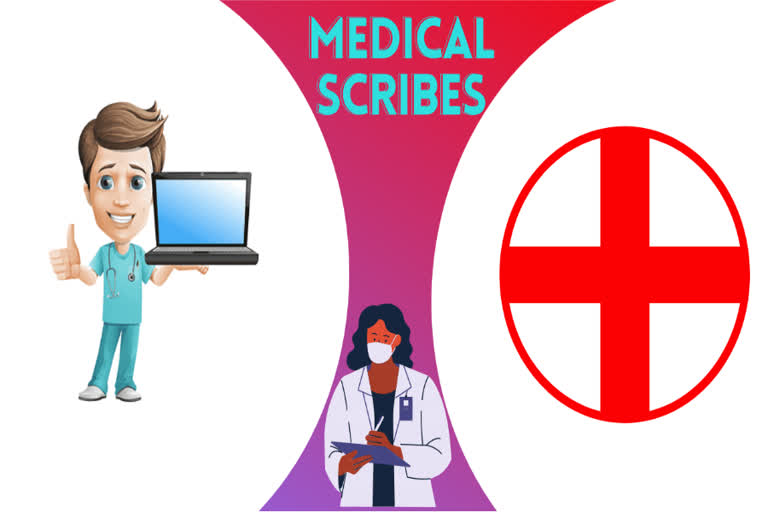San Francisco, California: Podiatrist Dr. Mark Lewis greets his first patient of the morning in his suburban Seattle exam room and points to a tiny video camera mounted on the right rim of his glasses. "This is my scribe, Jacqueline," he says. "She can see us and hear us."
Jacqueline is watching the appointment on her computer screen after the sun has set, 8,000 miles away in Mysore, a southern Indian city known for its palaces and jasmine flowers. She copiously documents the details of each visit and enters them into the patient's electronic health record, or EHR.
Jacqueline (her real first name, according to her employer), works for San Francisco-based Augmedix, a startup with 1,000 medical scribes in South Asia and the U.S. The company is part of a growing industry that profits from a confluence of health care trends including, now, the pandemic that is dispersing patient care around the globe.
- Medical scribes first appeared in the 1970s as note-takers for emergency room physicians.
- But the practice took off after 2009 when the federal HITECH Act incentivized health care providers to adopt EHRs.
- These were supposed to simplify patient record-keeping, but instead, they generated a need for scribes.
- Doctors find entering notes and data into poorly designed EHR software cumbersome and time-consuming.
- So scribing is a fast-growing field in the U.S., with the workforce expanding from 15,000 in 2015 to an estimated 100,000 this year.
A 2016 study found that doctors spent 37% of a patient visit on a computer and an average of two extra hours after work on EHR tasks. EHR use contributes to physician burnout, increasingly considered a public health crisis in itself.
Before COVID-19, most scribes typically young, aspiring health professionals worked in the exam room a few paces away from the doctor and patient. This year, as the pandemic led patients to shun clinics and hospitals, many scribes were laid off or furloughed.
Many have returned, but scribes are increasingly working online even from the other side of the world.
Remote scribes are patched into the exam room's sound via a tablet or speaker, or through a video connection. Some create doctors' notes in real-time; others annotate after visits. And some have help from speech-recognition software programs that grow more accurate with use.
While many remote scribes are based in the United States, others are abroad, primarily in India. Chanchal Toor was a dental school graduate facing limited job opportunities in India when a subcontractor to Augmedix hired her in 2015. Some of her scribe colleagues also trained or aspired to become dentists or other health professionals, she said. Now a manager for Augmedix in San Francisco, Toor said scribing, even remotely, made her feel like part of a health care team.
Augmedix recruits people who have a bachelor's degree or the equivalent, and screens for proficiency in English reading, listening comprehension, and writing, the company said. Once onboard, scribes undergo about three months of training. The curriculum includes medical terminology, anatomy, physiology, and mock visits.
Revenue has grown this year, and his sales team has grown from four to 14 members, Augmedix CEO Manny Krakaris said. Sachin Gupta, CEO of IKS Health, which employs Indian doctors as remote scribes for their U.S. counterparts, projects 50% revenue growth this year for its scribing business.
He said the company employs 4,000 people but declined to share how many are scribes.
